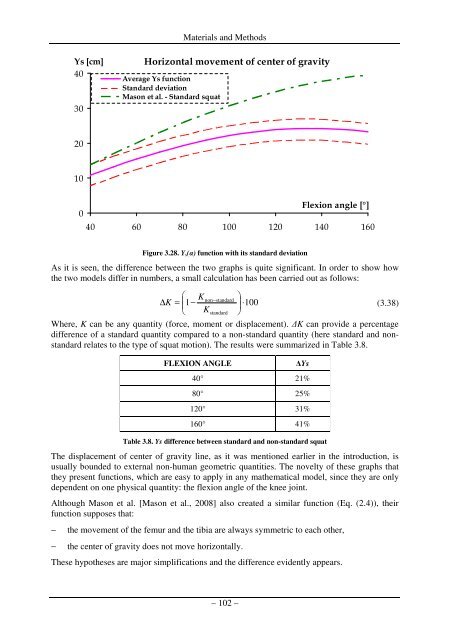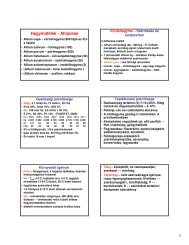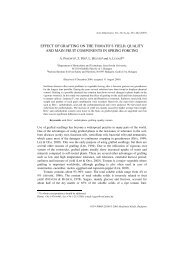PhD Fekete - SZIE version - 2.2 - Szent István Egyetem
PhD Fekete - SZIE version - 2.2 - Szent István Egyetem
PhD Fekete - SZIE version - 2.2 - Szent István Egyetem
Create successful ePaper yourself
Turn your PDF publications into a flip-book with our unique Google optimized e-Paper software.
Materials and Methods<br />
Ys [cm]<br />
40<br />
30<br />
Horizontal movement of center of gravity<br />
Average Ys function<br />
Standard deviation<br />
Mason et al. - Standard squat<br />
20<br />
10<br />
0<br />
Flexion angle [°]<br />
40 60 80 100 120 140 160<br />
Figure 3.28. Y s(α) function with its standard deviation<br />
As it is seen, the difference between the two graphs is quite significant. In order to show how<br />
the two models differ in numbers, a small calculation has been carried out as follows:<br />
⎛ K ⎞<br />
∆ =<br />
non standard<br />
⎜1<br />
−<br />
−<br />
K ⎟⋅100<br />
(3.38)<br />
⎝ Kstandard<br />
⎠<br />
Where, K can be any quantity (force, moment or displacement). ∆K can provide a percentage<br />
difference of a standard quantity compared to a non-standard quantity (here standard and nonstandard<br />
relates to the type of squat motion). The results were summarized in Table 3.8.<br />
FLEXION ANGLE<br />
∆Ys<br />
40° 21%<br />
80° 25%<br />
120° 31%<br />
160° 41%<br />
Table 3.8. Ys difference between standard and non-standard squat<br />
The displacement of center of gravity line, as it was mentioned earlier in the introduction, is<br />
usually bounded to external non-human geometric quantities. The novelty of these graphs that<br />
they present functions, which are easy to apply in any mathematical model, since they are only<br />
dependent on one physical quantity: the flexion angle of the knee joint.<br />
Although Mason et al. [Mason et al., 2008] also created a similar function (Eq. (2.4)), their<br />
function supposes that:<br />
−<br />
−<br />
the movement of the femur and the tibia are always symmetric to each other,<br />
the center of gravity does not move horizontally.<br />
These hypotheses are major simplifications and the difference evidently appears.<br />
– 102 –
















